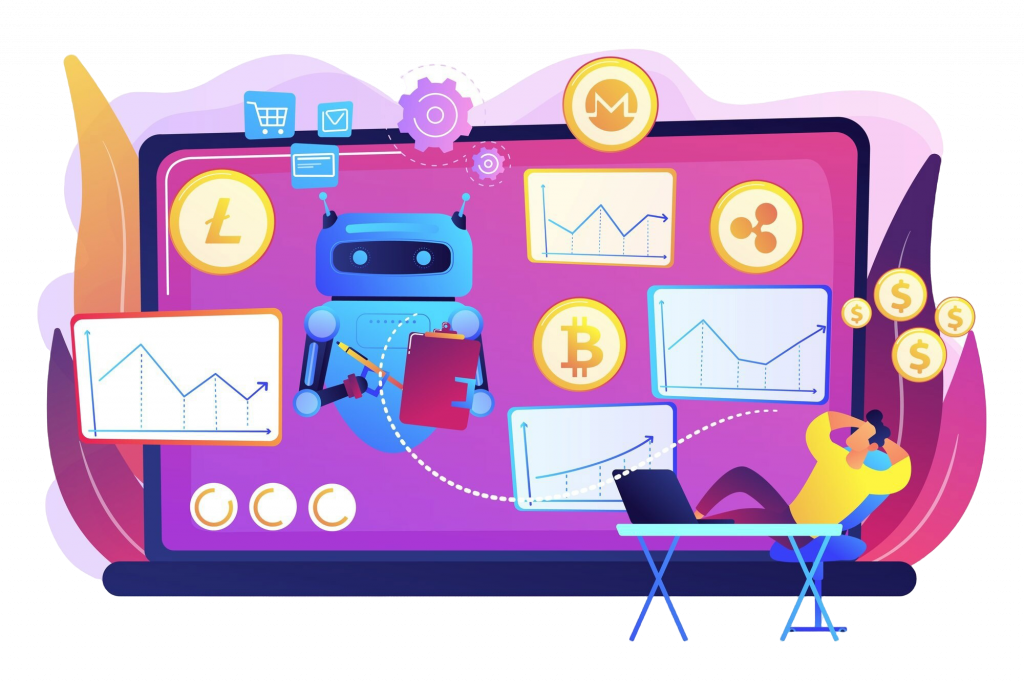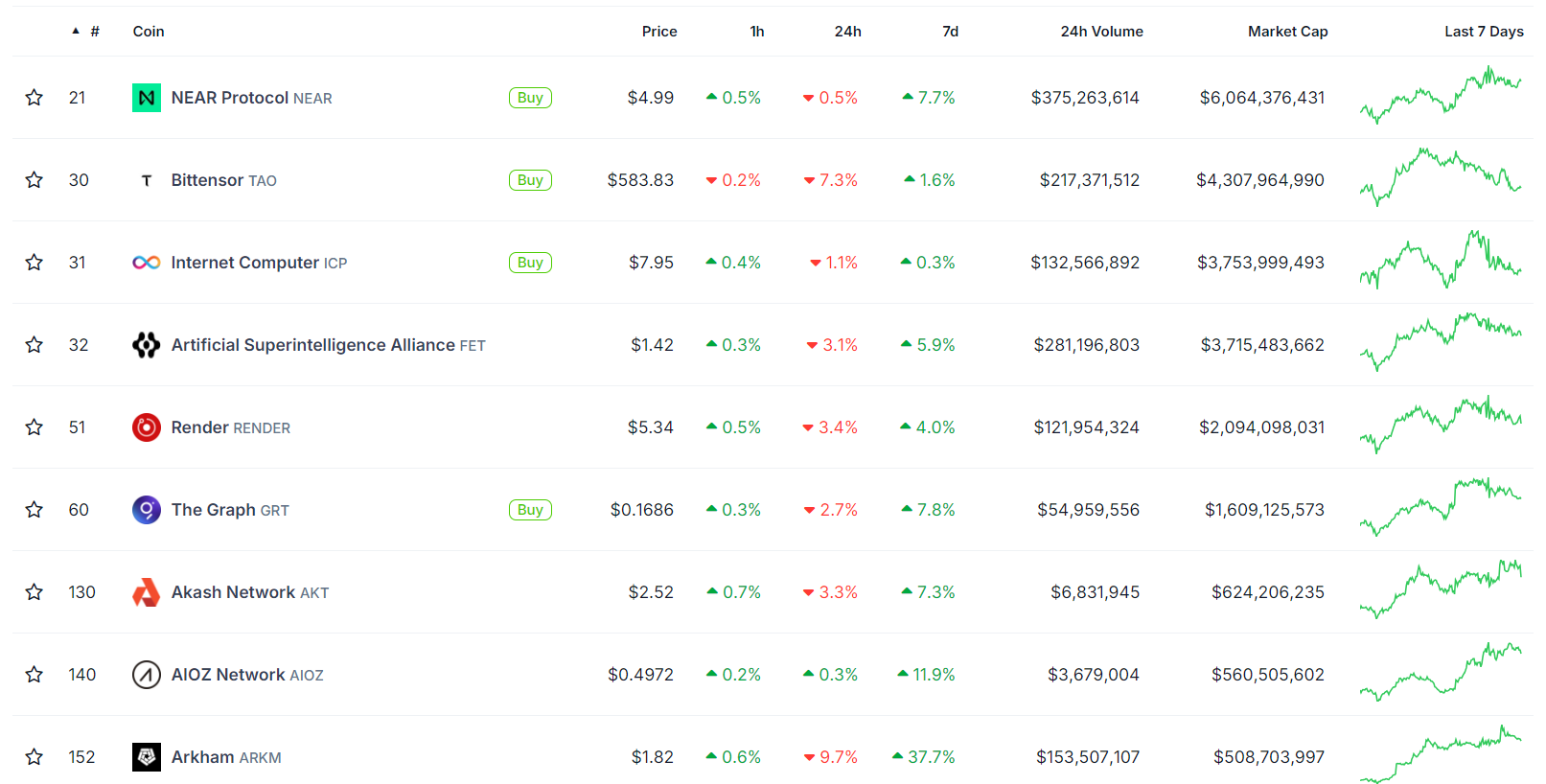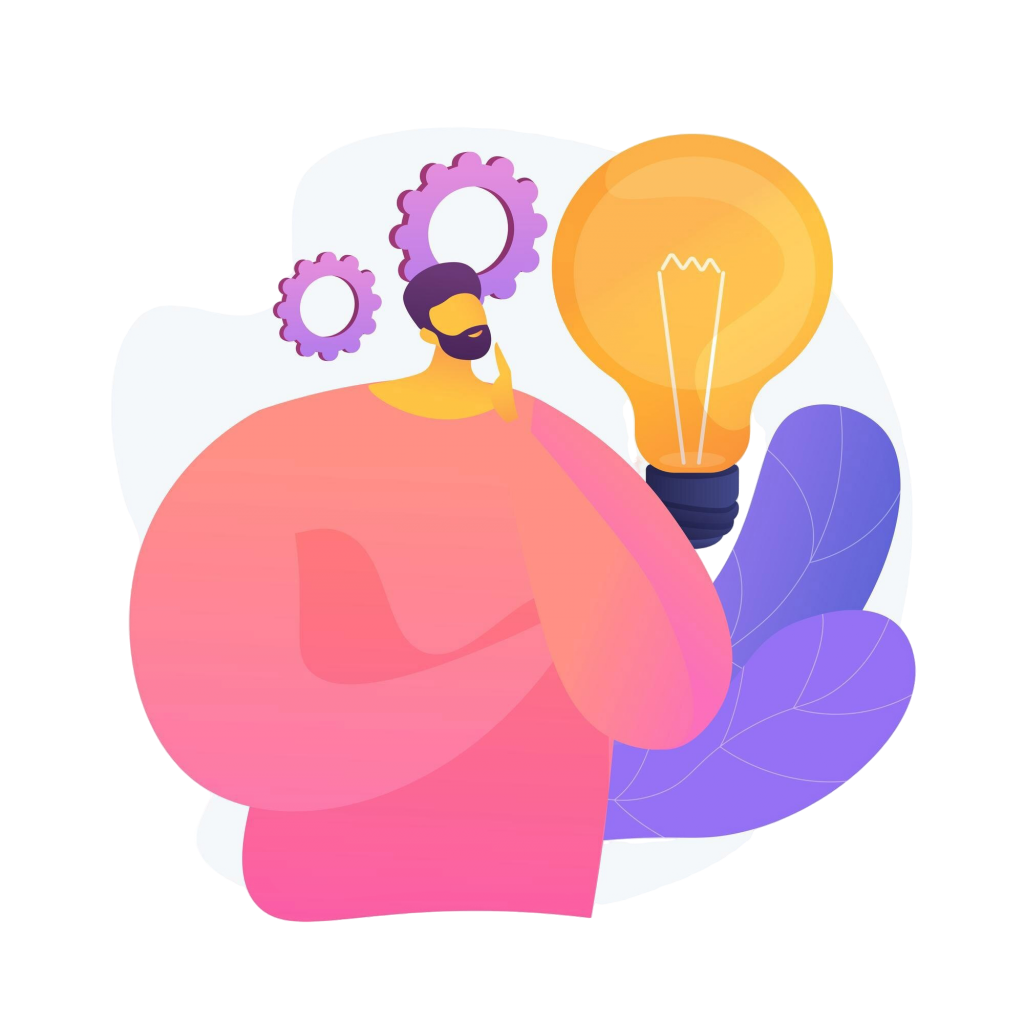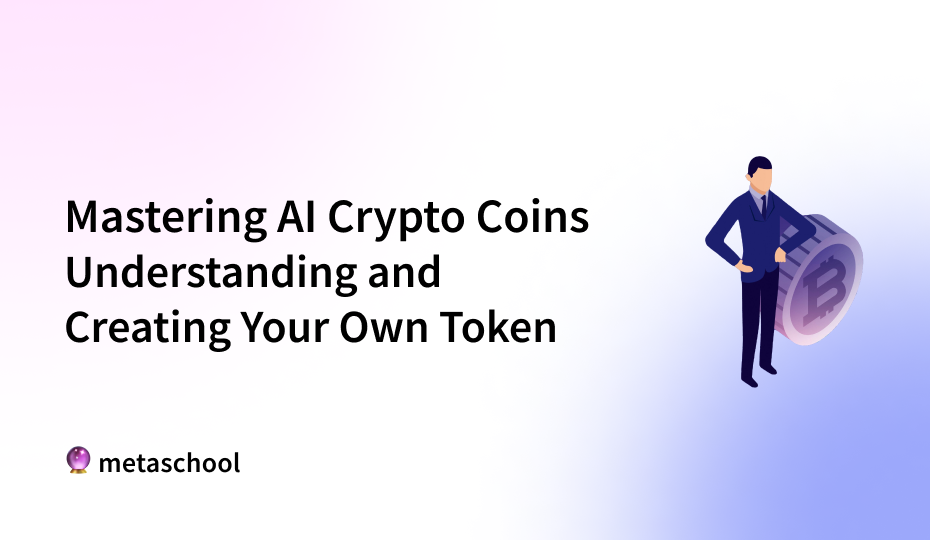Table of Contents
In recent years, AI and blockchain technology have emerged as two of the most transformative forces in the digital world. AI brings advanced computational power, machine learning algorithms, and data-driven insights, while blockchain offers security, decentralization, and transparency. As these fields evolve, they are increasingly converging to create a new class of digital assets—AI crypto coins. These coins or tokens essentially make use of AI to optimize the blockchain processes, automate trading, and enhance security (among other things).
Investors and developers are focusing on AI crypto tokens as the next big innovation in the cryptocurrency market. Much like the rise of ICOs (Initial Coin Offerings) and NFTs (Non-Fungible Tokens) during previous bull cycles, experts anticipate that AI tokens will define the next wave of growth and innovation in crypto.
In this article, we will explore the concept of AI crypto coins, the top tokens according to market trends, and their use cases. We will also thoroughly discuss how to create an AI Crypto Coin and finally shed some light on how AI can potentially reshape the future of cryptocurrency.

What are AI Crypto Coins?
AI crypto coins or (AI tokens) combine blockchain technology with the computational superpowers of AI. These tokens can automate various processes, from trading strategies and security protocols to managing decentralized systems and analyzing large datasets. The aim is to create blockchain systems that are not only secure but also adaptive, efficient, and scalable.
For example, AI can enhance the way decentralized networks operate by making decision-making smarter and faster. AI-driven tools can help predict market trends, optimize resource allocation in decentralized systems, and automate routine tasks like smart contract execution and auditing, reducing human error and improving overall system security.
The AI Tokens Market

The top three cryptocurrencies in October 2024 are NEAR Protocol (NEAR), Bittensor (TAO), and Internet Computer (ICP), each showcasing distinct market trends and characteristics. Let’s analyze the stats in more detail:
- NEAR Protocol (NEAR) is at the top of this list with a market cap of over $6 billion, making it one of the most prominent blockchain projects with AI features. While its 24-hour performance (at the time this article was written) shows a small decline of 0.5%, the 7-day change shows a positive growth of 7.7%, indicating a steady upward trend over the week. The recent trading volume is around $375 million, which reflects high market activity and investor interest.
- Bittensor (TAO) ranks second with a market cap of approximately $4.3 billion. It shows more volatility than NEAR, with a 7.3% decline in the past 24 hours, indicating short-term selling pressure. However, over the past week, TAO has managed a slight 1.6% gain, suggesting that while it has faced some fluctuations, it remains an attractive option for long-term investors. The 24-hour trading volume of $217 million shows that it is a highly traded asset.
- Internet Computer (ICP) is another major player, with a market cap of $3.75 billion and a price of $7.95 per token. While its 24-hour performance shows a slight decline of 1.1%, it remains relatively stable over the last week, with an increase of only 0.3%. Its trading volume in the last 24 hours amounts to $132.5 million, showing that it remains an actively traded cryptocurrency.
Please note that all the statistics I have shared were noted at the time this article was being written. To keep track of the top AI tokens and see how they are performing in the market, visit CoinGecko to view the latest stats.
Top AI Crypto Coins
Let’s dive into 10 of the most popular AI crypto coins. While these may not always be the top performers in the market, they are certainly gaining attention in the AI crypto space.
- NEAR Protocol (NEAR)
NEAR Protocol is a proof-of-stake blockchain that uses the Nightshade consensus protocol. It allows developers to create, deploy, and scale applications on the blockchain. It offers an intuitive experience to its users while also maintaining high security and throughput. NEAR supports approximately 100,000 transactions per second and processes blocks rapidly. - Render (RNDR)
Render is a blockchain-based platform that is designed for decentralized rendering and graphics processing. It basically connects users who need additional GPU power for rendering tasks with providers who receive RNDR tokens in exchange—facilitating the process of rendering 3D animations, visual effects, and CGI (all of which require high computational power) through a decentralized network. - The Graph (GRT)
The Graph is an indexing protocol for accessing and organizing data from various blockchains using GraphQL. It allows developers to build decentralized applications (dApps) by indexing blockchain data into subgraphs, making it easier to access specific information. GRT tokens are used for querying data and incentivizing participation in the network. - Bittensor (TAO)
Bittensor is a decentralized protocol that converts machine learning models into a competitive marketplace, incentivizing decentralized machine intelligence development. Its native cryptocurrency, TAO, is used for collaborative learning among nodes, sharing knowledge, and improving AI model performance. Bittensor integrates seamlessly with other blockchain networks and AI platforms. - Injective (INJ)
Injective is a decentralized exchange (DEX) protocol that supports trading cryptocurrencies, derivatives, and synthetic assets across multiple blockchains. It eliminates intermediaries, allowing direct asset exchanges. The INJ token is used for governance, staking, and rewarding liquidity providers. Injective also supports layer-2 scaling solutions to enhance transaction throughput and reduce latency. - Theta Network (THETA)
Theta Network is a decentralized video streaming and content delivery network that addresses the inefficiencies of traditional streaming platforms. It uses a modified Proof of Stake consensus mechanism and features smart contract support, edge caching, and partnerships with major content providers. THETA tokens govern the network, while TFUEL tokens facilitate microtransactions and operations. - Fetch.ai (FET)
Fetch.ai is a decentralized machine learning platform that uses autonomous software agents to perform tasks like data fetching, processing, and service provision. It integrates machine learning algorithms to train agents for intelligent decision-making and supports smart contracts to automate processes. FET tokens power the network, facilitate transactions, and reward participants. - Akash Network (AKT)
Akash Network is a decentralized cloud computing platform offering a marketplace for computing resources. It provides a cost-effective alternative to traditional cloud services, with AKT tokens used for transactions, staking, and governance. Akash integrates with the Cosmos ecosystem, expanding its user base and cross-chain functionality. - SingularityNET (AGIX)
SingularityNET is a decentralized marketplace for AI services, allowing developers to share and monetize AI solutions. The platform uses AGIX tokens for transactions, and it offers a modular architecture for integrating AI services. SingularityNET emphasizes privacy and security, ensuring data integrity and protecting AI computations. - Ocean Protocol (OCEAN)
Ocean Protocol aims to unlock data for AI use by providing a secure, decentralized marketplace for data sharing and monetization. It allows AI and data scientists to access large datasets without compromising privacy. OCEAN tokens are used within the ecosystem to facilitate transactions and reward data providers.
Steps to Create an AI Crypto Coin
Now that we’ve explored what AI crypto coins are and analyzed the performance trends of popular tokens, it’s time to discover how you can create your very own AI crypto coin. Let’s go!

1. Define Your AI Crypto Coin
The first plan of action is to clearly outline the purpose of the coin and its value proposition. Then, identify the specific problem your coin will address and the benefits it will offer its users—whether it’s facilitating AI-based transactions, incentivizing data sharing, or enabling AI-powered services.
2. Choose the Right Blockchain Platform
Selecting a suitable blockchain platform is actually pretty important to ensure your coin’s success. Consider factors like scalability, security, and developer support when evaluating options like Ethereum, BNB Chain, or Polygon. Each platform offers unique features, so it’s important that you carefully read up on the official documentation—main features, pros and cons, and use cases—to help you choose the one that aligns with your project requirements and goals.
3. Design Your AI Crypto Coin
It’s time to start developing your coin’s design elements. You can begin by working on these components:
- Tokenomics: Create a robust model that outlines distribution, utility, and governance mechanisms. Define the total supply of tokens to align with your project objectives.
- Token Standard: Select a standard that fits your chosen platform (e.g., ERC-20 for Ethereum, BEP-20 for Binance Smart Chain).
- Branding: Design a memorable logo and visual identity that reflects your coin’s purpose and resonates with your target audience.
Here’s a tip: Try collaborating with other developers who have experience working in the web3 space. Someone who has worked on a blockchain ecosystem (preferably the one you have chosen) will have a good idea of what works better; this will help you enhance the design process and set a strong foundation for your coin.
4. Develop Your AI Crypto Coin
Transitioning from design to development, you’ll need to:
- Create Backend Infrastructure: Build servers, databases, APIs, and middleware to support secure transactions and user interactions.
- Implement Key Functionalities: Focus on user experience and accessibility, ensuring that your coin is easy to use.
- Develop Smart Contracts: Write secure smart contracts that govern your coin’s behavior on the blockchain and integrate with AI services or applications.
Working closely with skilled developers can help navigate the complexities of creating a functional and secure coin.
5. Audit and Test Your AI Crypto Coin
Conduct thorough auditing and testing of your coin and its smart contracts. Engage reputable blockchain development companies to perform security audits, ensuring the integrity and safety of your coin ecosystem. Test your coin across various scenarios to validate its functionality and ensure a smooth user experience.
6. Deploy Your AI Crypto Coin
Once your coin and smart contracts are thoroughly tested and audited, proceed with deployment:
- Follow platform-specific deployment procedures to ensure a seamless launch.
- Verify your coin’s functionality on the blockchain and perform final checks to confirm readiness for public use.
7. Provide Ongoing Support and Maintenance
To ensure the longevity and effectiveness of your AI crypto coin:
- Establish responsive support channels to address user inquiries and technical issues.
- Regularly update and optimize your platform for security, performance, and functionality.
- Stay informed about industry trends and regulatory changes to adapt your coin accordingly.
By prioritizing ongoing support and maintenance, you can foster trust, loyalty, and growth within your AI crypto ecosystem.
Use Cases for AI Crypto Coins
- Automated Asset Management
AI crypto coins can be used as a foundation to develop smart asset management systems. These systems leverage AI algorithms to help users optimize and monitor their cryptocurrency portfolios in real-time, automating tasks like rebalancing and risk management, ultimately maximizing returns and minimizing effort. - Smart Economic Networks
AI crypto projects can also facilitate in the creation of interconnected digital economies. By utilizing AI for faster and more efficient data sharing between people, services, and devices, these projects can enhance communication and operations across industries such as healthcare, logistics, and finance, driving innovation and productivity. - Intelligent Security Systems
AI tokens offer robust security solutions, which can allow businesses to implement cutting-edge protection measures for any sensitive data. AI algorithms can also be used to continuously monitor and detect any suspicious activity and secure transactions and personal information from any potential security breaches or fraud. - AI-Driven Trading Strategies
AI tokens can power advanced trading platforms, offering personalized trading algorithms that learn from the market. These platforms utilize AI to create adaptive, data-driven strategies, helping traders maximize profits by making intelligent, automated trades in response to market changes. - Digital Identity & Character Creation
AI crypto projects can enable the creation of digital identities and characters for virtual worlds or games. With AI backed customization and crypto tokens as currency, users can interact with these digital avatars in various platforms, earning rewards or using tokens for in-platform transactions.

AI Memecoins
Memecoins are a trending topic in the world of crypto and are now slowly embracing the AI trend—merging the viral appeal of internet culture with the excitement surrounding artificial intelligence.
AI meme coins are basically a growing subset of the broader AI crypto space, blending the speculative nature of meme tokens with the potential of AI-driven blockchain technologies. These tokens, often propelled by hype and community-driven narratives, capitalize on the buzz surrounding AI, much like NFTs and certain ICOs did in previous market cycles. While meme coins have traditionally thrived on humor and viral marketing, the integration of AI adds a fresh new angle, which has the potential of attracting both crypto enthusiasts and newcomers (people who might be eager to invest). However, many of these coins lack substantial technological advancements or real-world use cases, relying instead on hype and speculation.
While most of these tokens may not have substantial long-term value, they can attract speculative investments, leading to price volatility and short-term profits. However, within this speculative frenzy, a small portion of AI tokens are likely to emerge with real substance, offering tangible solutions in areas like decentralized computation and data management. As a result, investors should approach AI meme coins with caution, recognizing the distinction between short-term hype and long-term utility.
Ultimate Guide to Launching a Meme Coin on Base [2024]
This step-by-step course teaches you how to build, deploy, and market your own meme coin on the Base Chain, a Layer 2 blockchain. Whether you’re a crypto beginner or an experienced developer, the course covers smart contract development, tokenomics, liquidity management, and community-building strategies. It includes 3.5 hours of on-demand video, lifetime access, and a certificate of completion, all for $44.99. By the end, you’ll have the tools to confidently launch your own meme coin.
The Role of AI in Shaping the Future of Cryptocurrency
AI is revolutionizing pretty much all the industries and the web3 space is no different. Let’s explore a few aspects of cryptocurrency that can really use some AI magic.
- Market Analysis and Trading: Machine learning algorithms can analyze large datasets to identify patterns and predict market trends, enabling traders to make informed decisions and optimize investment strategies.
- Security Enhancement: AI can also be used to help enhance security protocols in the cryptocurrency space by detecting and preventing fraudulent activity. Machine learning models can identify unusual transaction patterns, flag potential threats, and thus ensure a more secure environment for digital asset transactions.
- Automated Trading Systems: The integration of AI with blockchain technology has also led to the development of sophisticated automated trading systems. These systems make use of reinforcement learning agents enhanced with causal analysis to easily navigate the volatile cryptocurrency market; this capability allows any autonomous trading decisions to be backed by real-time data.
The emergence of AI crypto tokens represents a convergence of AI and blockchain technologies. These tokens are integral to projects that incorporate AI capabilities, facilitating the sharing of AI-focused resources and enabling decentralized marketplaces for AI services. Looking ahead, the coming together of AI and crypto is poised to drive significant advancements. This includes the development of smart, self-regulating digital currencies and the enhancement of transaction speeds, contributing to a more robust and scalable financial ecosystem.
FAQs
Which AI crypto is best?
The “best” AI crypto depends on what you’re looking for. However, some of the most popular and highly regarded AI-based cryptocurrencies include Fetch.ai (FET) for its decentralized AI-driven services, SingularityNET (AGIX) for its open AI marketplace, and Ocean Protocol (OCEAN) for its role in unlocking data for AI. These projects stand out for their innovation, active development, and market adoption. Each excels in different areas like autonomous agents, AI services, and secure data sharing.
What are the AI cryptocurrency coins?
AI cryptocurrency coins integrate artificial intelligence with blockchain technology to offer advanced capabilities like AI-powered smart contracts, data sharing, or financial decision-making. Some of the leading AI cryptocurrency coins include:
• Fetch.ai (FET)
• SingularityNET (AGIX)
• Ocean Protocol (OCEAN)
• Numeraire (NMR)
These coins have unique AI-driven functionalities, offering real-world solutions ranging from decentralized AI services to market prediction models.
Is AI the future of crypto?
AI has the potential to play a significant role in the future of cryptocurrency. By combining AI with blockchain, developers can create smarter, more efficient networks. AI can enhance the security, automation, and decision-making processes within blockchain ecosystems, making it a natural complement to the decentralized nature of crypto. AI-powered algorithms can optimize everything from trading strategies to governance models, driving innovation and increasing the practical applications of cryptocurrency.
Is Rose an AI coin?
Rose (Oasis Network’s native token) is not an AI coin. While the Oasis Network focuses on privacy-enabled blockchain solutions, including secure data storage and DeFi services, it is not specifically designed for AI applications. However, its emphasis on secure and private data sharing could be complementary to AI-focused projects that require sensitive data management.
